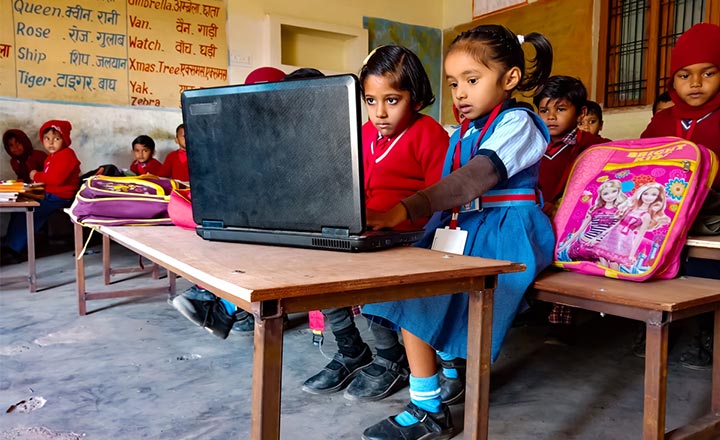For those complaining about having to attend online classes every morning from the comfort of their homes, here is a privilege check for you: 14-year-old Devika Balakrishnan in Kerala’s Malappuram set herself ablaze on June 1 for not being able to access online education. Hailing from a poor Dalit family, Devika did not have the resources, neither a television nor a working internet connection, to log in for the classes that were started by the state government via Victers channel and other online platforms.
And, she is not alone. A simple Google search will throw up several news reports of students climbing rooftops and trees or trekking for kilometers to find decent internet connectivity. According to data released by TRAI, as of 30th September 2019, there were 248 million internet subscribers in rural areas, a little more than half the 440 million subscribers in urban areas. To put this in context of population density, total urban internet subscribers per 100 people is 104.25 while it is 27.57 for rural areas. When not even one-third of rural India is online, it is myopic of the industry to expect a complete shift to e-learning, warn experts.
In May, Delhi University issued a notification announcing online open book examinations for students, if COVID-19 situation did not improve soon. This took the institution by storm. Four professors wrote to the President of India to “stop this social discriminatory examination method in the university”. The decision not only disregards those with no resources, but also visually-impaired students. Days of outrage later, Delhi High Court has declined to interfere in the matter and no steps have been taken to make the exams inclusive.
And let us not forget about Kashmir, a place where internet shutdowns are routine. According to an experiment conducted by Rest of the World in May, a student in Kashmir is able to load a document once in 59 seconds while a student in Tamil Nadu is able to load the same file 11 times in that duration. In fact, simple tasks like watching video lectures take up to 50 times longer in the union territory, states the report.
In order to ensure that online education is not a luxury, internet connectivity needs to be a fundamental right in this country. Till then, with problems galore, e-learning might be very far away from becoming the new normal.











